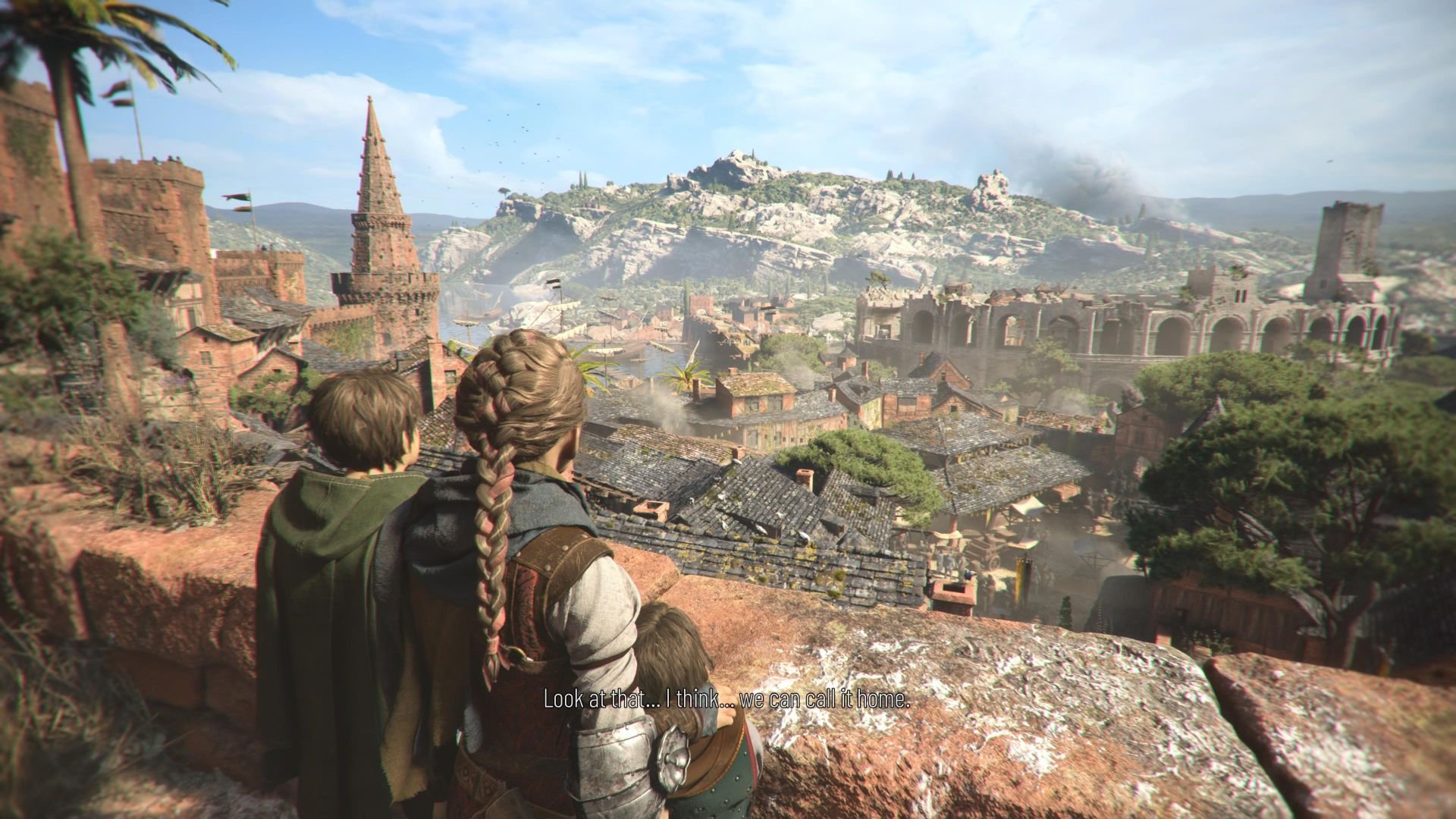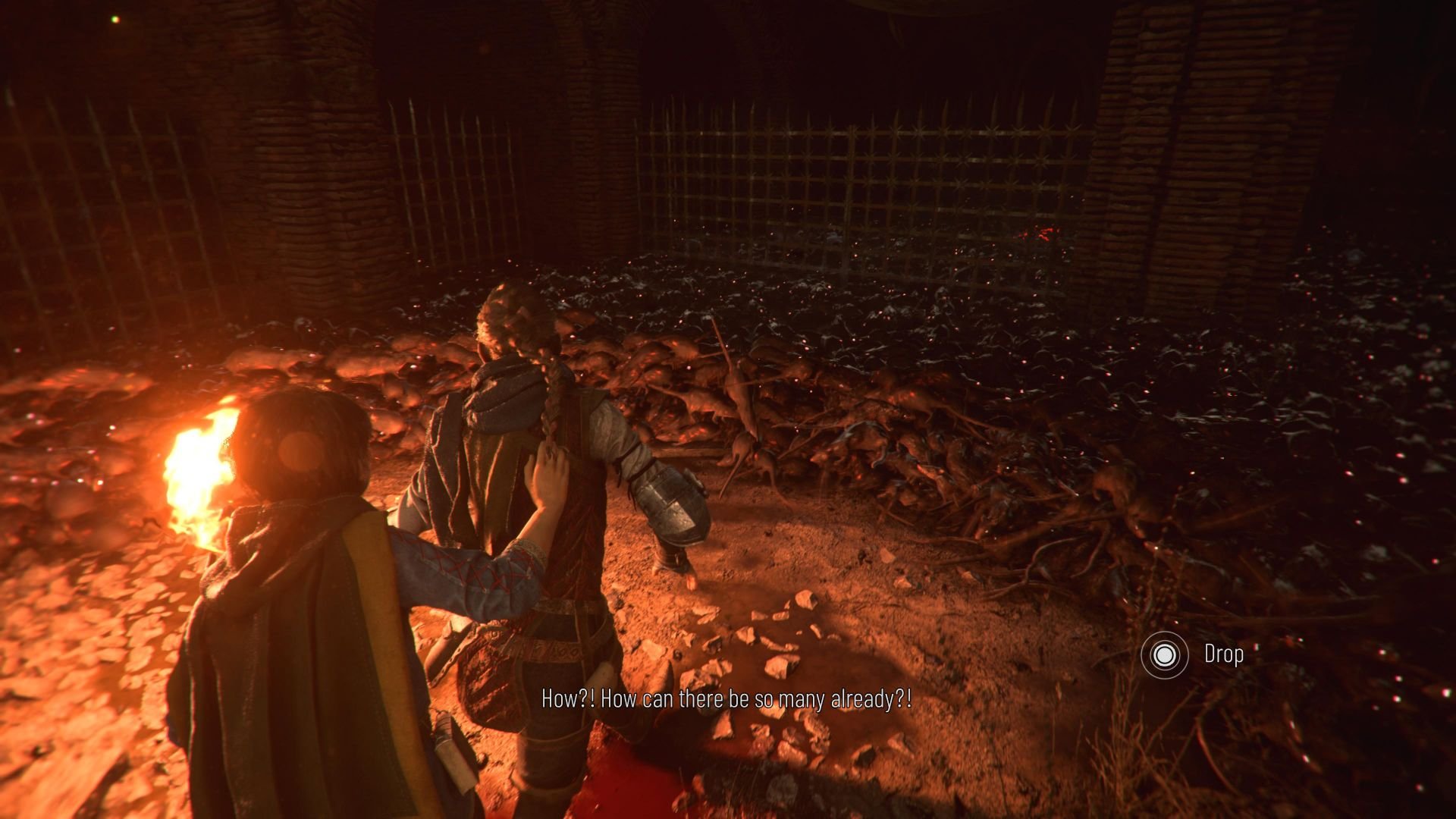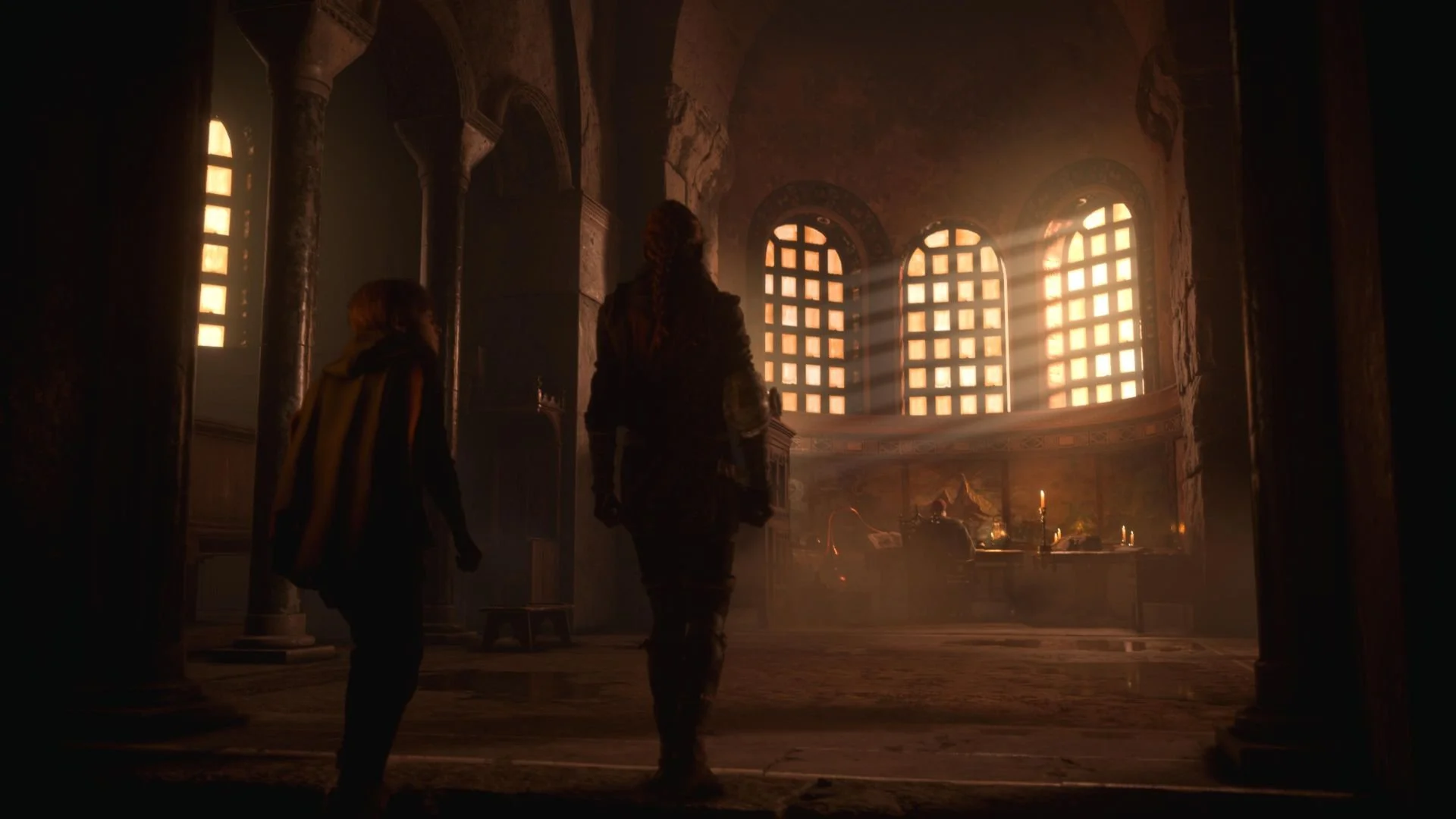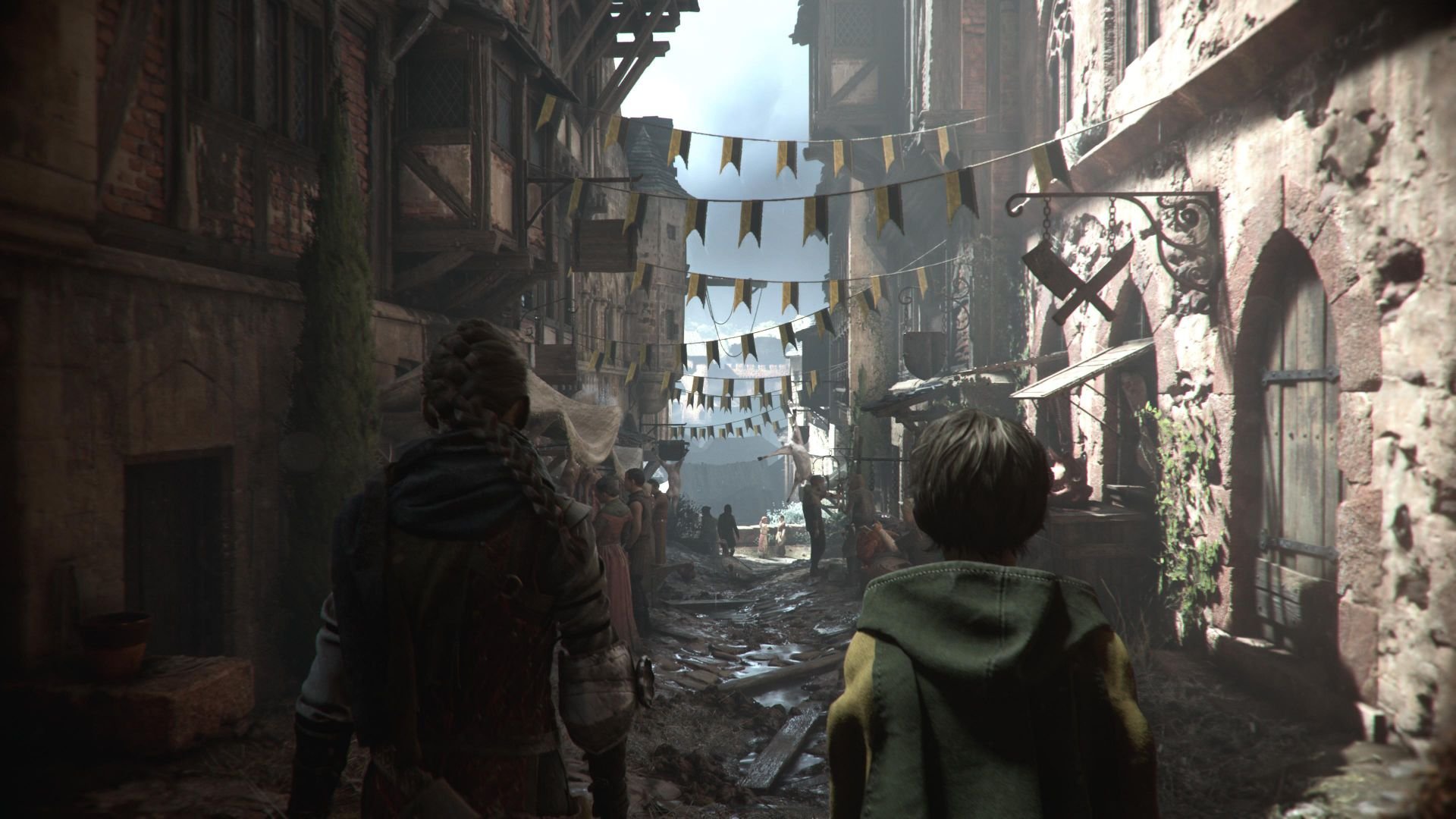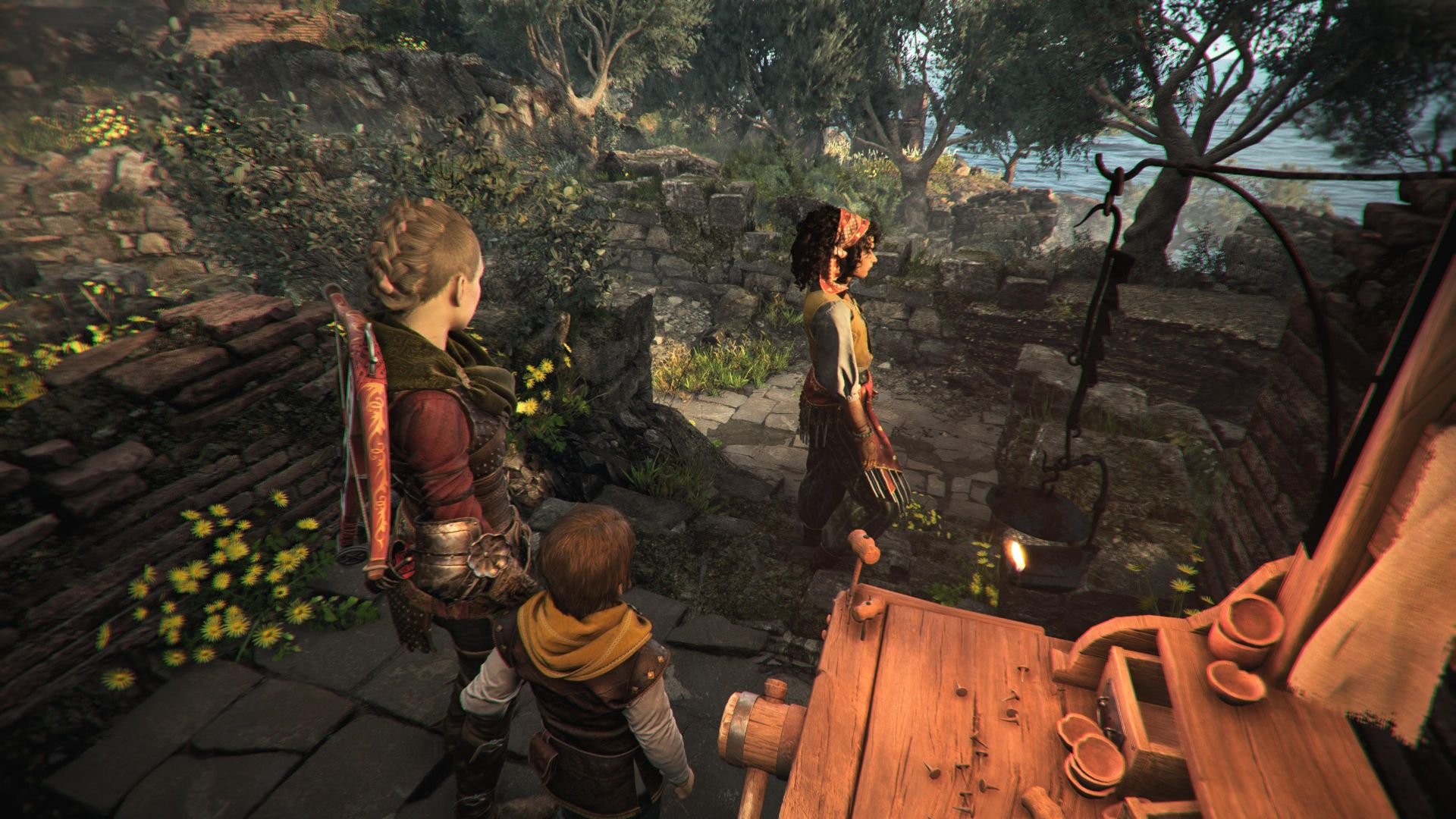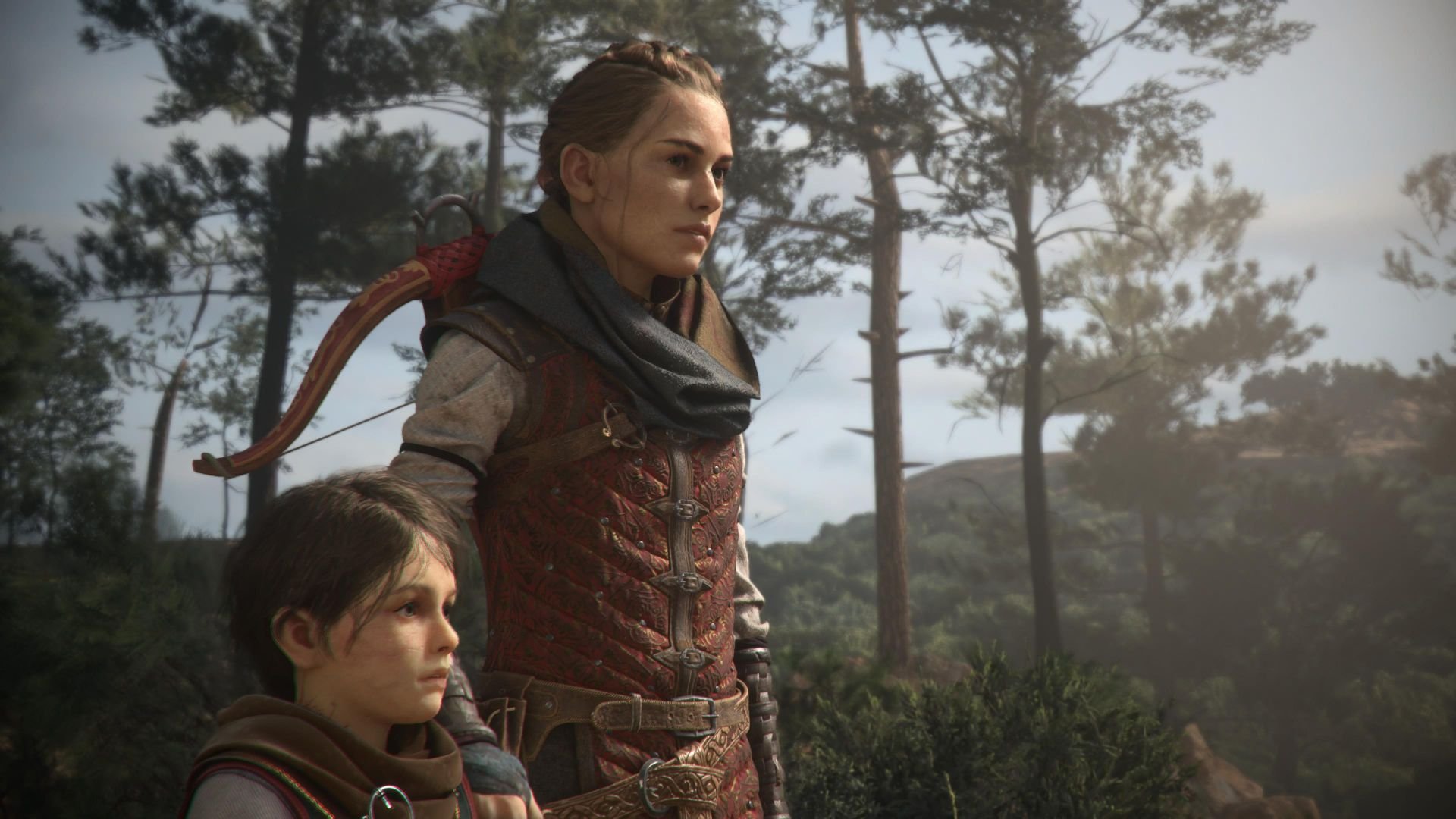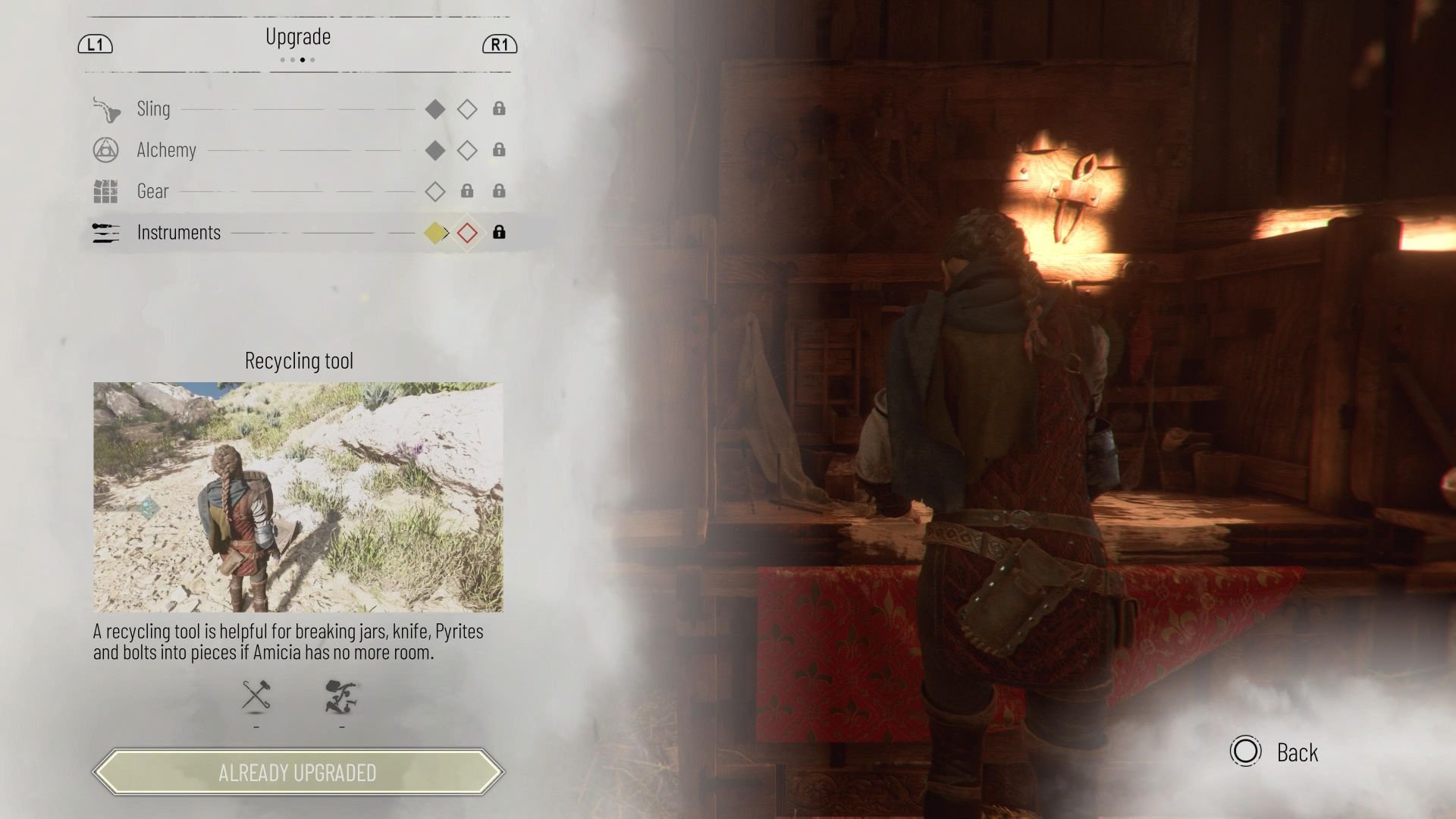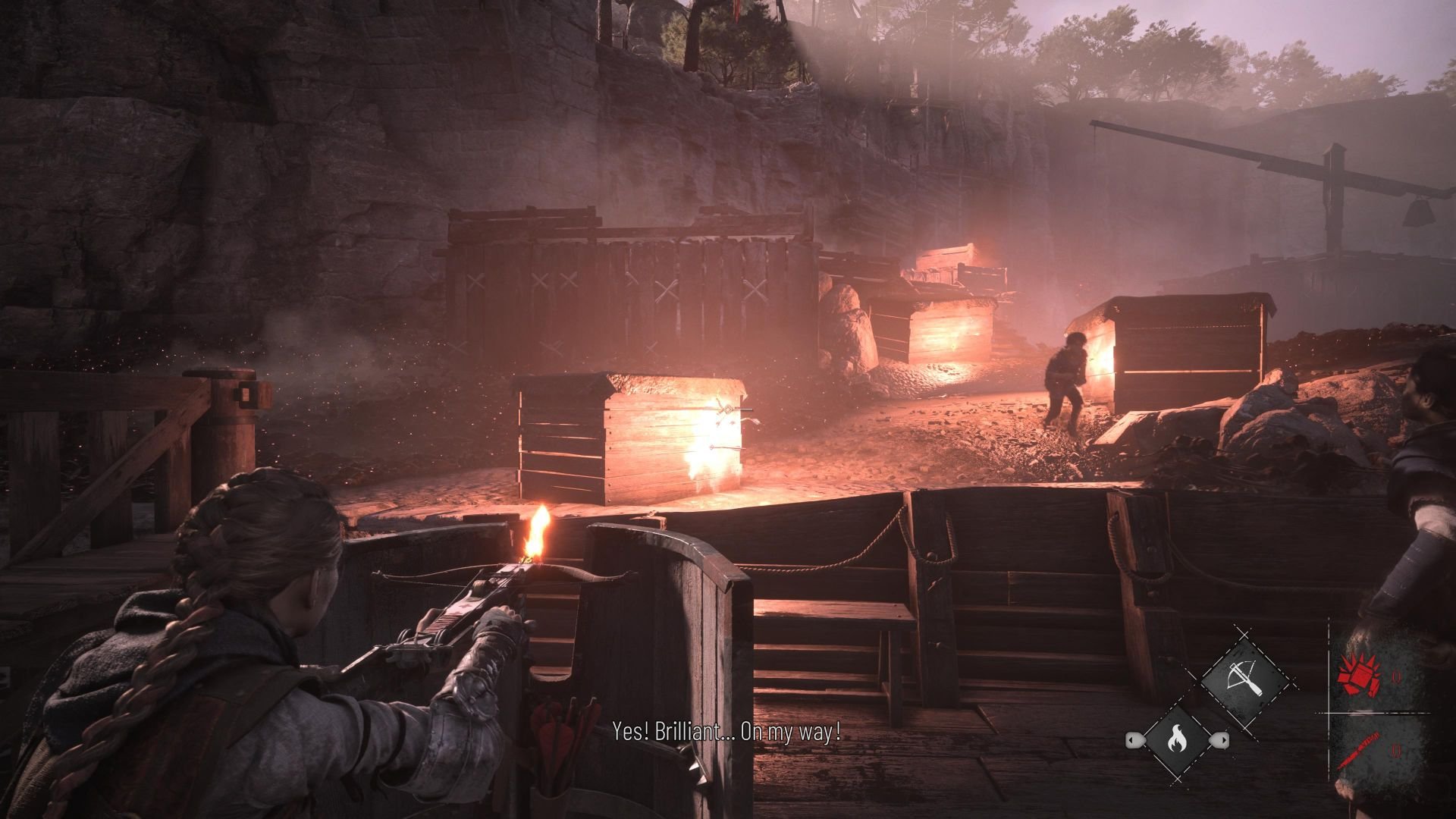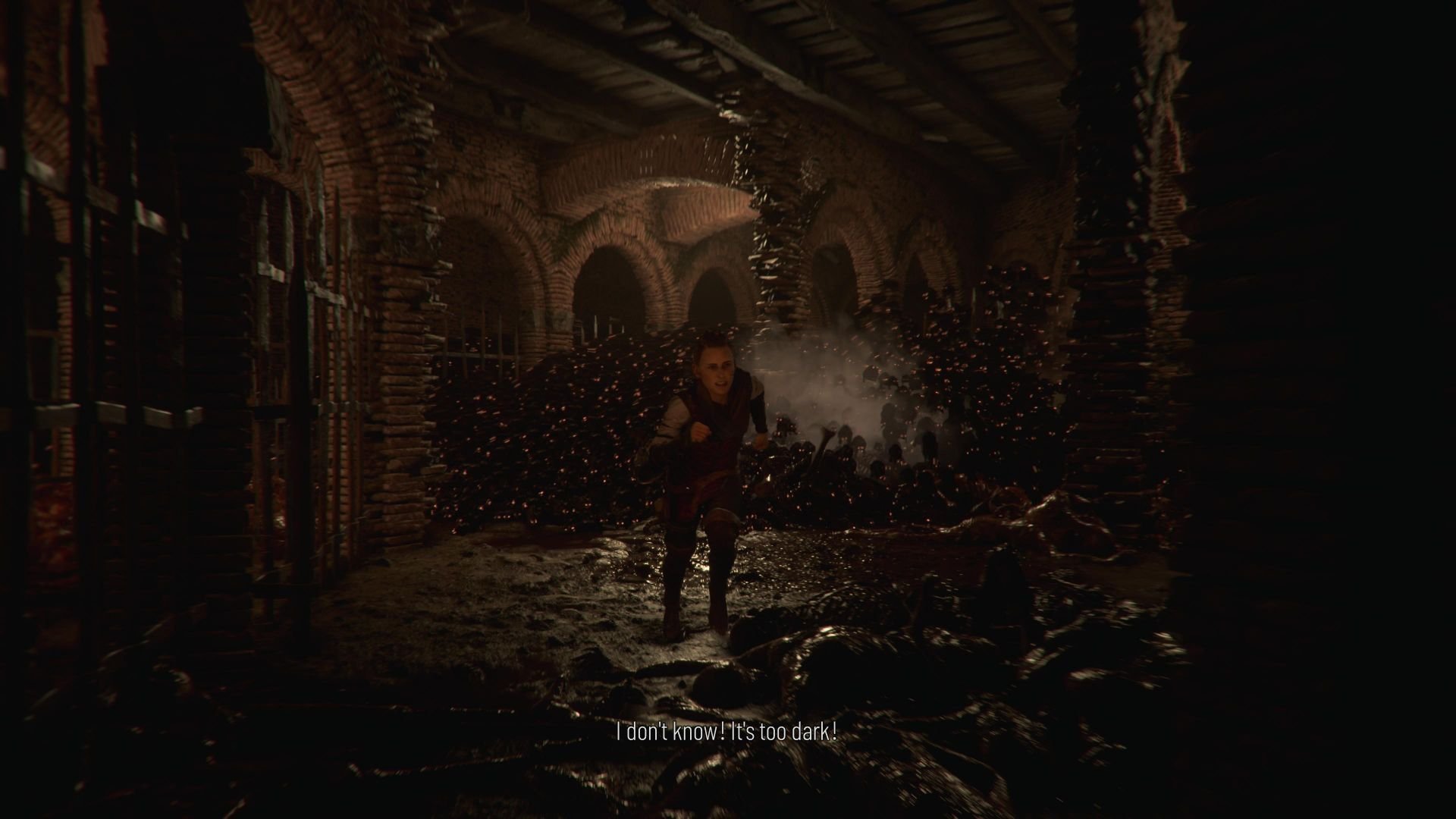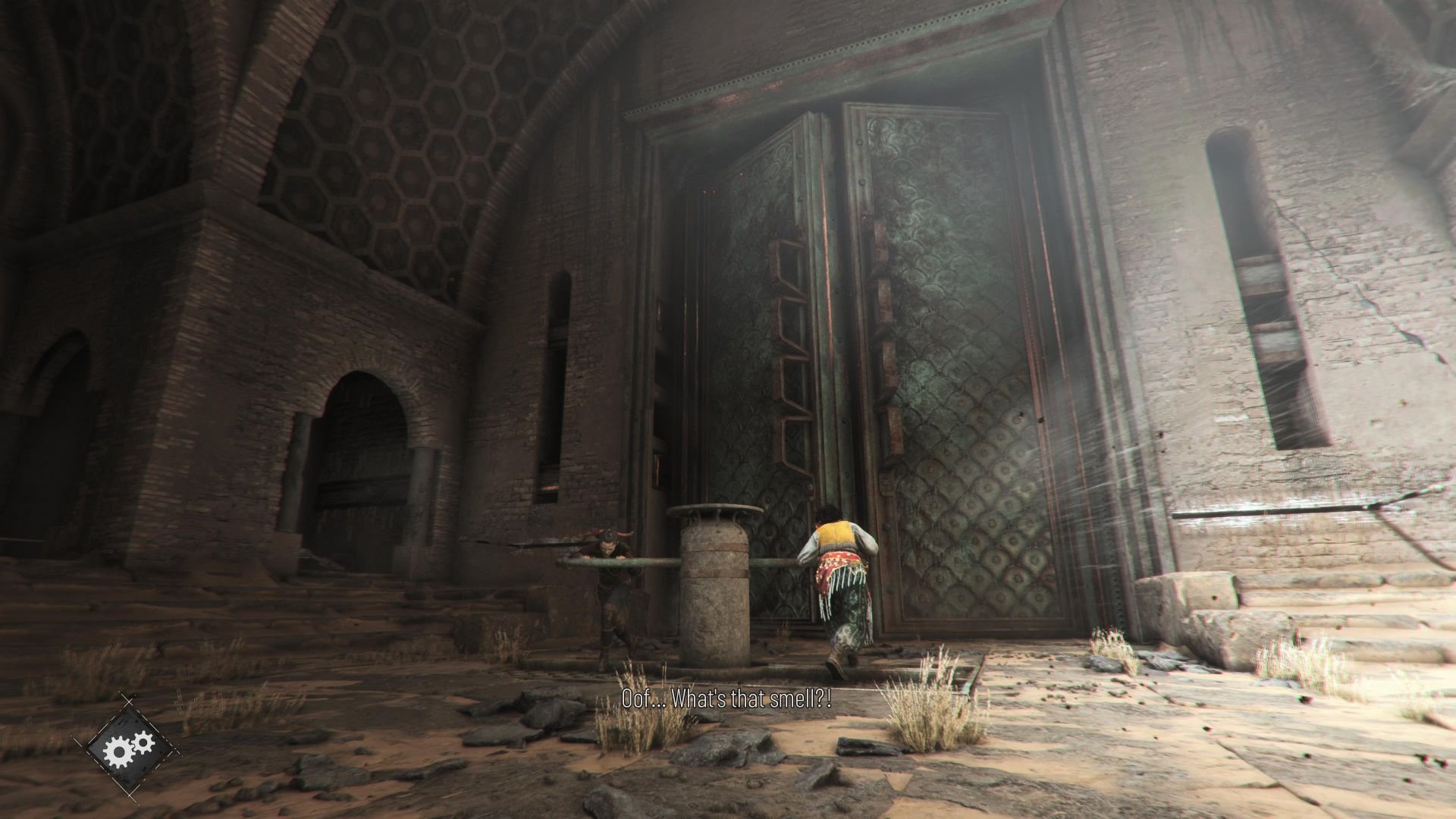Mischief makers.
A Plague Tale: Innocence was a dark and brutal tale woven around the bond between Amicia and Hugo, two siblings that were on the run from the inquisition, all while attempting to get to the bottom of the disease that was slowly consuming the younger of the two De Rune children. Requiem directly follows the events of Innocence as the pair are attempting to move on with their lives, even if destiny has other plans.
Innocence was certainly a surprise hit from Asobo Studios when it launched in early 2019, a small studio almost punching above its weight. It was a visual powerhouse at the time, delivering an experience that put them alongside several AAA studios at the time. Requiem continues that trend as the studio has produced one of the best-looking games of this generation, even if there are a few rough edges present that pop up from time to time. Requiem is indeed impressive, but a bit more time in the oven would have resulted in a far more polished experience.
Requiem takes its narrative on with the full belief that its player has completed its previous adventure. Amicia, Hugo, Beatrice, as well as their alchemist friend, Lucas, have ventured away from dangerous lands in an effort to live a peaceful life. While there is some respite for the group, the disease that has plagued Hugo since he was an infant has resurfaced, and with only a dream of an island paradise to heal him, the group must venture into the unknown to attempt to put an end to this life-threatening illness.
While the bulk of the 15-20-hour adventure plays to the tune of what we have experienced before; hiding from guards in the tall grass, using light and alchemic concoctions to kill or utilize the rodent menace, Requiem is peppered with more intense gameplay moments that almost give this sequel a taste of the Uncharted series, and personally, I am very much there for it. While some fans may be against this boost of providing more action in contrast to the slower and more methodical pacing of the original, I find the game does a remarkable balance of never being just one type of experience for too long.
Action and combat aside, the core of this experience is the narrative that exists between Amicia and Hugo. Requiem is a much longer and more expansive experience than Innocence, so this results in more story and interactions between the pair as well as a few newcomers that join them on their inescapable journey. Amicia is deadset on curing Hugo or, at the very least, desiring some sort of normal life for her brother. Her determination is unmatched, and the lengths she will go to protect him leads her down a dark path that influences Hugo in some unfortunate but expected ways.
Charlotte McBurney and Logan Hannan are back as Amicia and Hugo and deliver incredible performances yet again, especially that of McBurney. Her rage is justified and is sold with grit and a snarl as she throws her whole being into her attackers. Even at her weakest, she’ll offer up her life to protect him, locked in battle with those who would often underestimate her. Her performance is hands down the best of the year and one of the strongest elements of this adventure.
While Lucas and Beatrice are back as well, each with somewhat smaller but still very important roles, it is newcomers Arnaud and Sophia that really excel in being captivating characters, each performed by actors that truly sell them brilliantly. Anna Demetriou as Sophia almost has this Chloe Frazer-like appeal with her voice and personality; a smuggler who gets caught up with the pair as she takes them aboard her ship to reach an island that came to Hugo in a dream. Her companionship here becomes an anchor for Hugo and Amicia to rely on, an ally they can trust, and a friend when they truly need one. Arnaud himself is an interesting character and one that I won’t dive much into due to his involvement here. Much like Sophia, his connection to the pair is one that has a major impact on their lives and his character arc is massively engaging and became one of my favorite members of the cast.
The story places the entire group, regardless of who is present or not, in multiple dire situations. Whether it is navigating through hundreds of thousands of rats, or around the vast amount of soldiers that fill each battleground. Each of your companions brings with them some sort of gameplay hook to help you progress. From straight out telling someone to engage your foes in battle, throwing alchemic concoctions that explode in their face, to using a prism to generate a glowing aura all around you, you almost always have one of these characters alongside you, contributing to your already packed arsenal of abilities and tools.
While not every tool or alchemic concoction returns from Innocence, Amicia has a decent amount of variety from returning favorites to some all-new tricks. Much of the gameplay still results in hiding in the grass, throwing rocks to distract guards, throwing extinguishing powder at their lanterns, and then seeing the hordes of rats consume them in seconds. You also have the ability to counter their attacks with a knife, dropping them to the ground with a fury of quick stabs. The knife is also a tool you’ll want to hold onto as it can be used to open up workstation compartments for crafting, so there is a balance between wanting to use them and needing to.
However; the game often takes you out of stealth and forces you into situations where you are in open battle with numerous soldiers, often at the mercy of using a very stealth-focused arsenal out in the open. While you do have eventual access to a crossbow, the ammo you have for it is extremely limited, usually having you rely on jars of flammable liquid as a means to set your foes on fire. While you can use your sling to take down soldiers that are not wearing their helmets or tearing their armor apart with a few well-placed shots, it’s a shame that the Devorantis ability to burn away their helmet didn’t return here as it is sorely missed.
If I had to knock Requiem’s action element for any sort of fault, it is that combat and navigation can often feel a bit too trial and error for my tastes. While it never truly soured any specific point of the game for me, there was certainly an encounter or two where the direction wasn’t as clear as it could have been or that the linear nature of the pathing some enemies are tied to felt like I needed to react faster than I wanted or could. While I had some technical hiccups with rats either suddenly appearing out of nowhere, or a few situations where they ignored the light around me and killed me instantly, these moments were thankfully rare.
The shift to new hardware certainly benefits Requiem as not only are locations drastically larger and more intricate than they were in Innocence, it is the sheer volume of detail in those environments and the number of rats that can be present that constantly impress from location to location. There are several moments where the rats become this sea of little red eyes, punctuated by a soundtrack that builds that intensity and dread as you await when they will strike, sometimes to your advantage. Despite that intensity, there is also a calm and melancholy flavor to the soundtrack that builds upon the hope instilled by its central cast.
Requiem has you once again gathering materials to fuel your alchemic concoctions, creating the ability to throw fire to a nearby firepit, thus illuminating your surroundings to clear the rats or to douse a present flame and funnel the rodent menace towards your own personal goal. While you can either use your sling or throwable pots to do this, your crossbow can also be just as effective, shooting bolts into nearby wooden surfaces to hold a flame where you need it. You’ll still be moving mobile light sources around to using kindling to light your way, but you’ll also have new tools that can cause light sources to explode, giving you a few extra seconds of a sudden burst of additional light.
Nearly every tool you have at your disposal is also used to navigate a few puzzles. While some chapters don’t really present these as often as others, they usually have you moving a light source around to find your way through an army of rats or using your crossbow to attach ropes to nearby surfaces. I never found myself stuck or even puzzled by any of these, but found them just enjoyable enough for me to not tire of them when another would present itself. Asobo does a great job at keeping most encounters and exploration paced rather well, especially with the inclusion of several moments where you are running away from thousands upon thousands of rats in what is often referred to as the Crash Bandicoot run.
To outfit Amicia for the challenges ahead, you do have somewhat of a progression system. Instead of giving Amicia skill points to slot into a certain build, you will gain these additional perks based on how you play. If you are more focused on engaging your foes in battle or using your alchemic skills, you will be rewarded through the progression path that compliments that play style.
if you play to stealth, Amicia will benefit from the Prudence path, allowing her to make less noise while moving as well as being able to throw items further. Should you engage in combat out in the open, Amicia can push her attackers into nearby fire pits or even the hordes of rats that are all around you. This Aggressive path also consists of being able to reload her weapons faster or being able to choke them out with her sling more efficiently. Lastly, we have the Opportunism path, which is based on how often you use your alchemic skills, allowing Amicia to get more use out of her crafting materials to being able to craft ammo considerably faster.
As you find additional materials, you can also upgrade her kit, from being able to use your sling faster to how many bolts your quiver can carry; these upgrades can often feel substantial in their necessity. One upgrade that I felt was easily my first to consider was being able to hold more resources, allowing me to take advantage of every chest I encountered, ensuring I left nothing of value behind. You’ll eventually be able to upgrade your kit at any time, regardless of whether there is a workstation nearby. You’ll also find equipment in secret locations, such as the Bracer, which allows Amicia to recover from enemy attacks considerably faster, so make sure to keep an eye out for a few windmills and a secret path once you’ve solved the puzzle.
While you’ll mostly take on this adventure as Amicia, you can also use Hugo to take control of small hordes of rats, having them roam around the battlefield towards foes that lack any sort of light source. I would often douse their flames from afar and then take control of my little rat army, destroying an entire contingent of soldiers and then easily progressing to my destination without conflict. It’s a system that has a meter in check to keep it from being taken advantage of and serves as a nice distraction from the similar elements that return from Innocence.
Requiem also has several collectibles to keep an eye out for as you often explore off the beaten path. While these consist of a dozen items for Hugo’s personal collection, such as several feathers to clip to his cloak, you’ll want to keep an eye out for over twenty souvenirs that have their own little narratives. As the game dives into a lot of the past of Hugo’s disease, the little narratives built around many of these are enjoyable little moments that truly add something to the story.
While Innocence was no slouch when it came to its visuals, especially with how small the team was at the time, Requiem is often stunning, offering some of the most incredible visuals in the industry. Asobo is a team of around 250 people, but they are also a developer on Microsoft Flight Simulator, so they have their hands in a few pies at the moment. Still, Requiem is almost jaw-dropping around every corner with character models that often soar, especially some of the facial animations of its central cast.
While the game is gorgeous from top to bottom, I still found a few animations to not be as polished as I’d have liked, often resulting in them feeling a bit stilted in their execution. I had one whole cutscene feature mouth animations that simply didn’t sync up, and if you saw Skillup’s review on the game, it was the exact same moment for myself as well. I also had a few instances where I couldn’t interact with a character unless I found the exact fraction of an inch where they were selectable, often having Amicia maneuver back around them to where I had initially tried to select them. I also had one glitch that forced me to restart my chapter as I somehow pulled a mobile container into the side of the windmill, preventing me from sending Hugo through the small hole in the wall.
A Plague Tale: Requiem is an impressive experience with a vastly entertaining and yet depressing story that populates it with characters and moments that truly resonate with you. While its gameplay and overall design echo that of what was present in Innocence, there are enough new mechanics and systems that bring some much-needed freshness to its gameplay, if sometimes only slightly. While the technical issues present here didn’t truly sour my time with Requiem, it simply creates an awareness of where the highs are high, but the lows stand out just a bit too much. Asobo has certainly worked some magic here to create such a stunning title that I would love to see them continue and grow and come back with a more polished game that is worthy of their talents.
Developer - Asobo Studio. Publisher - Focus Home Entertainment. Released - October 18th, 2022. Available On - PlayStation 5, Xbox Series X/S, Nintendo Switch (Cloud), Windows. Rated - (M) Blood and Gore, Strong Language, Violence. Platform Reviewed - PlayStation 5. Review Access - A review code was provided by the publisher for the purpose of this review.


